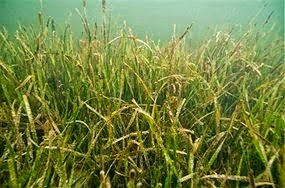This week Bloomberg News published a sobering story describing the use of pesticides in Northwest waters by the oyster industry. Included in this story is the approval by the Washington State Department of Ecology of the insecticide imidacloprid, a potent neurotoxin, for spraying over Willapa Bay and Greys Harbor. This toxin is known to kill bees and, according to the manufacturer should NOT be use in water:
“This product is highly toxic to aquatic invertebrates. Do not apply directly to water, or to areas where surface water is present or to intertidal areas below the mean high water mark.”
Today, Danny Westneat published a similar story in the Seattle Times.
It is not like the environmental negligence of the powerful Washington State oyster industry was a mystery, with community groups such as ProtectOurShorelines describing the chemical stew and plastics spread over our public waterways by this industry. Last year, I blogged about this issue when taking on some of the factual errors in the Seattle Times stories about ocean acidification.
This issue represents a major failure by the state agency responsible to protect Washington's environment (Washington State Department of Ecology). It is an example of a wealthy industry getting its way, of cozy relationships with politicians, of incomplete information being provided to the State's citizens.
The Coalition to Save Puget Sound document to environmental predations of some in the local shellfish industry (link here)
There is a long history of oyster aquaculture here in the Northwest. Native oysters (the Olympia oyster) were originally abundant until harvested to near extinction. To replace it, local oystermen brought in the larger Pacific oyster from Japan, a species unable to spawn naturally in our local waters. But a problem developed in the 1950s after fresh water flushing from Columbia River was reduced by dam construction and timber harvesting had degraded the quality of our coastal bays: native burrowing shrimp flourished in coastal bays. Unfortunately, the burrowing churned up the tideflats and disrupted oyster growth. And overfishing removed many of the predators for the little shrimp.So the oystermen decided to use a powerful insecticide, Carbaryl, a neurotoxin and carcinogen. It is highly toxic to human and animals. Amazingly, the State Department of Ecology allowed this.
But there was another problem for the oystermen: extensive eelgrass, which was undermining the productivity of oyster beds. The solution: spraying an herbicide Imazamox over the coastal wetlands. And AGAIN the Department of Ecology approved spraying a problematic chemical over our natural marine environment.
A number of environmentally concerned folks were worried about the Carbaryl use, and after substantial pressure, the oyster industry turned to another insecticide, one never used on water before in the U.S., imidacloprid, a chemical used in several home and agriculture pesticides. Imidacloprid is considered dangerous to bees and is banned in Europe. And guess what? The Department of Ecology has given permission for its use in our coastal bays starting next month.
This chemical is highly soluble in water and will spread in the water to fish and other wildlife.
Are you getting the idea that the Washington State Department of Ecology is more interested in protecting the bottom line of the oyster industry than protecting the health of Washington citizens and our natural environment? You would not be alone.
And the bottom line of the oyster folks is doing very well, thank you. Here are some interesting statistics from the Washington State Department of Fish and Wildlife of the number of pounds of unshelled oysters produced in Washington each year and the price per pound. The harvest was level and the price QUADRUPLED (the reason is mainly because of loss of production in other parts of the world). Someone is making a LOT of money.
Graphic courtesy of Todd Myers, WPC
So the oyster industry is making out like bandits, while the Seattle Times is writing stories about a crisis in oyster production due to ocean acidification. As I described in detail in several of my previous blogs, the only oyster deaths were in factory oyster seed farms when they mistakenly took in cold, upwelled water during the summer. Once they understood their mistake (with the help of the University of Washington and NOAA PMEL), the production of oyster larvae was stable and the industry is doing well. Want proof? Here is the price for oyster larvae the last few years: rock solid.
There is no more prevalent untruth going around in the media and among some politicians than the claim that rising CO2 has been undermining oyster harvests during the past few years. This statement is simply false. And I have confirmed this with expert colleagues at the UW and NOAA PMEL
A question you might ask is why the Washington State Department of Ecology is allowing our precious waters to be turned into chemical dumping grounds for the sake of private sector interests? One can start with jobs and money, with the Washington oyster industry bringing in nearly two-hundred million dollars a year and providing several thousand jobs.
But there is something else. The supposed oyster/coastal acidification link is being used by some state politicians to support a political agenda dealing with greenhouse warming and rising CO2. Several state politicians claim in speech and speech that the oyster issue is the "canary in the coal mine" for CO2 and global warming. Such politicians are often involved in photo-ops with oyster industry folks and clearly are not enthusiastic about restraining the activities of the local shellfish industry. Global warming is a very serious issue for our region... it is counterproductive to hype the oyster connection to convince folks to reduce their carbon footprint.
The oyster folks admit in private that rising CO2 is not currently an issue for them, but the claim in very useful in making them look environmentally progressive and attractive to those with a political agenda. It also gives customers an inaccurate impression that oysters are rare and threatened, encouraging prices to rise.
Want to complain to the Department of Ecology before the new insecticide is sprayed along our coastal waters? Contact your local state representative or call/email the head of the Department of Ecology Maia Bellon. Email the Governor.
And you might think twice about ordering oysters in a restaurant or from your local market.
Finally, I should note there are other major environmental issues regarding the local shellfish industry. For example, there is the massive use of PVC pipe and other plastics for geoduck production (see picture). Every acre of geoduck aquaculture includes approximately 8 miles of PVC tubes plus 40,000 plastic net caps, plastic bands and/or 30 x 30 ft. plastic canopy nets.
We are talking about a serious source of plastic pollution (more info here).


























.gif)
.gif)























